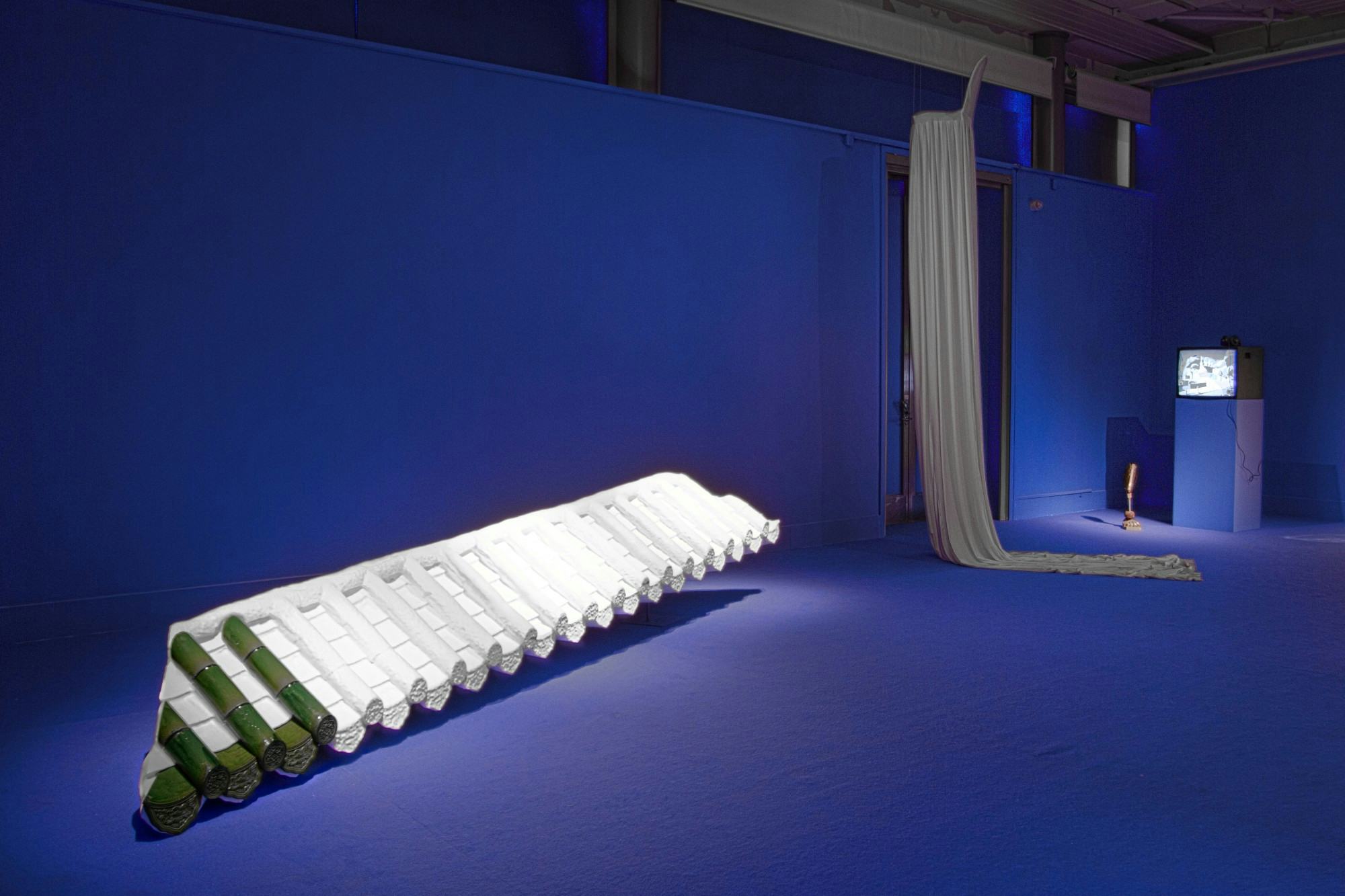LB°18 — Artists
ARKIVLap-See Lam (b. 1990) is an artist based in Stockholm.
In Lap-See Lam’s works Beyond Between and Gwái, she picks at the idea of authenticity. The desire to consume that which is “strange” or “foreign,” from food to images, is turned on its head to become a mirror of ourselves. Like antique sculptures or artefacts in museums are sometimes reconstructed, and have their missing parts returned to them, Lam has collected objects from a soonbygone culture of Swedish Chinese restaurants. In Beyond Between, a 3D-milled reconstruction is made into a prosthesis. The seams are laid bare in the construction of the fantasy. The pagoda-style roof – typically found outside, on temples, or in “China Town” areas – is often found in Sweden as part of restaurant interiors. Lam lifts the roof off the environment, and then back again. This reconstruction is also a kind of reincarnation, which makes possible its new function as commemorative object. It becomes something that is worth remembering. At the same time, the digital process entails a degree of simplification, a loss of detail familiar from the continuous transformations of history. The roof becomes a ghost moving into a speculative future. It continues to be defined, not by its function, but rather by how we relate to it.
In Gwái, this ghost returns as image; a hovering object. It exists in limbo, perhaps stuck there, or moving towards the periphery, the future. The furniture is covered, as if people have moved away. The chair is empty, but recalls the shape of a body. It could be that here is an image of the migrant as a kind of ghost in the West. A figure who moves through the dark, dragging along their historical baggage, infiltrating the contemporary. The ghost also stands in for the systems that are not visible, the stories that are not told, the infrastructures of migration, and the geographies of Chinese restaurants. It outlines the contours of our projected fears. When it appears, it is to reveal the viewer, rather than itself.
At Ájtte - Mountain- and Sami Museum, Lap-See Lam is included with another sculpture; Mother of Lightning.
There is a six-centimetre difference in height between the artist Lap-See Lam, her mother and her grandmother – a relation reflected in the work Mother of Lightning, in which three yellow flashing neon lights are mounted onto a large mirror surface. In her practice, Lam examines her own family history, and how a Chinese diaspora found their place in Sweden in the 1970s and onwards through the establishment of Chinese restaurants. But Lam’s work is not limited to the biographical. Using fiction as her tool, and the particular interior design of the restaurants as her formal language, Lam makes visible how an abstract place becomes tangible through appropriating the image of ‘the exotic’ Chinese restaurants are not authentic representations of the Chinese landscape or culture, but a western projected idea of the east. The sculpture also refers to the Chinese legend of Dian-Mu, the goddess or mother of lightning. A key figure in the creation of weather phenomena, she uses mirrors to make lightning. By directing the bolts, she lets her husband Lei-Gong, the god of thunder, know which people or evil creatures to punish. The goddess makes sure that thunder never strikes the innocent.
Myth, projection and migration histories are all recurring themes in Lap-See Lam’s artistic practice. She is interested in the gaps that occur between generations, and reflect on identity and belonging in relation to knowledge, memories and mythologies. In this work, we meet our own gaze, and, as our figures lit up by the harsh glare of the flashing lights, become active parts of the story.
Lap-See Lam (b. 1990) is an artist based in Stockholm.
Thanks to Macromould modell & form and Restaurant Waldorf in Luleå.
Work
Beyond Between, 2018
New commission
Location
Luleå konsthall
17.11.2018–17.2.2019
Work
Gwái, 2018
New commission
Location
Luleå konsthall
17.11.2018–17.2.2018
Work
Mother-of-Lightning, 2018
Location
Ájtte - Swedish Mountain- and Sami Museum, Jokkmokk
30.10.2018–17.02.2019
